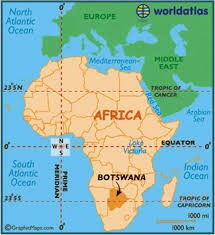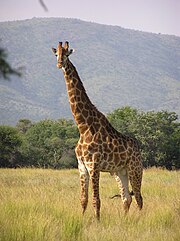Two large mining companies, Debswana (formed by the government and South Africa's De Beers in equal partnership) and Bamangwato Concessions, Ltd. (BCL, also with substantial government equity participation) operate in the country.
Most (70%) of Botswana's electricity is imported from South Africa's Eskom. 80% of domestic production is concentrated in one plant, Morupule Power Station near Palapye, operated by the Botswana Power Corporation. Debswana operates the nearby Morupule Colliery to supply coal to it. In early 2008, the entire southern African region was hit hard by massive shortages in power, since the region works to share its power resources through the Southern African Power Pool, with most of the capacity coming from South Africa. Botswana has in turn put in place plans through governmental expansion of the Morupule power station, as well as encouraging private investment in the form of a 4,000 megawatt power station by the Canadian Greenfield company CIC Energy to become a net exporter of power to the regional pool.
BCL, which operates a copper-nickel mine at Selebi-Phikwe, has had a troubled financial history but remains an important employer. The soda ash operation at Sua Pan, opened in 1991 and supported by substantial government investment, has begun making a profit following significant restructuring.
Tourism
Tourism plays a large role in the Botswana economy. A number of national parks and game reserves, with their abundant wildlife and wetlands, are major tourist attractions. The wildlife, including lions, brown hyenas, cheetahs, leopards, wild dogs and antelope, were described in great detail in the best-selling book "Cry of the Kalahari" by Mark and Delia Owens.
The main safari destinations for tourism are Moremi Game Reserve in the Okavango Delta, and Chobe National Park. Botswana is also participating in community based natural resource management projects by trying to involve villagers in tourism. One example is the village of Khwai and its Khwai Development Trust.
Botswana was the setting for the 1980 movie The Gods Must Be Crazy, although the movie was mostly filmed in South Africa. The seventh season of the Amazing Race visited Botswana. Tourism has been stimulated by the series of detective novels by Alexander McCall Smith and the American dramatisation that followed them



